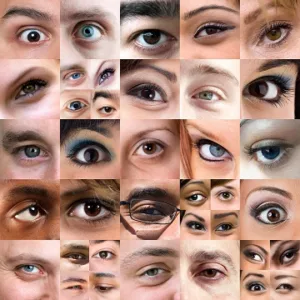I suppose the first thing we need to cover is “what do we mean by brownfields and healthfields?” Let’s start with some dictionary definitions:

brown·field /?broun?f?ld/
1. Unused properties, such as abandoned gas stations, landfills, junkyards, blighted or vacant areas.
health·field /helTH?f?ld/
1. Unused brownfields that have been cleaned up, reinvested in and reinvigorated, thus becoming healthy places to live in, work in, learn and play in.
According to the U.S. Environmental Protection Agency (EPA), the notion of moving from brownfields to healthfields implies “a community driven process that transforms ugly and blighted spaces into thriving and healthy locations for the benefit of overburdened and underserved populations.” Moving from bad to good.
This summer I attended the 2018 national convention of optometrists and vision health practitioners of the American Optometric Association, called Optometry’s Meeting, hosted in Denver. I was invited to participate in a meeting of the B2H Committee, in conjunction with the conference. The meeting included dignitaries from the EPA Office of Environmental Justice and the American Optometric Association (AOA), most notably, one of the key facilitators behind this group, the Chief Medical Officer of the AOA, Dr. Michael Duenas. Also in attendance were the newest president-elect of the American Optometric Association and other distinguished doctors.
Already a successful project in nine U.S. cities and rural areas, the B2H group was well on its way toward visioning a few new projects for expansion. One of these is the Center for Sustainable Communities (CSC), located in the heart of Compton (CA), a reclaimed brownfield, once an old grocery store and now being turned into a thriving community center. Part of the vision of the AOA is to insert a thriving vision clinic and teaching center within the walls of this reclaimed facility. The clinic would be supported and served by optometry students from a nearby university, and the teaching center would meet many needs—from adults to children, and from basic community education to career re-training. Space is already allocated and ready to go for these functions.
Center for Sustainable Communities (CSC), Compton (CA)
Part of the vision of the planned training center is to employ VR and 3D display technologies prominently in the facility. At the same time, these technologies can be used by doctors to aid in the diagnosis and treatment of vision and learning disorders, which are all too common in depressed and low-income communities. Negotiations are already underway to pursue zSpace’s proven 3D and VR vocational education systems and AVRover’s portable 3D projection carts. For greater clarity about the use of 3D and VR in diagnosing and treating vision and learning challenges, see my recent articles, “A Nexus Story: Vision, Learning and Displays” or “The Screen Time Debate: Displays Fight Back” (subscription required). Incidentally, the B2H vision health emphasis is based on recommendations from the National Academies of Sciences, Engineering and Medicine (NASEM) 2016 report entitled “Making Eye Health a Population Health Imperative: Vision for Tomorrow”, which aims to upend the vision health challenges of underserved populations, while also pumping welcome resources into depressed local economies.
Projector or display companies that are interested in having their equipment featured in this new facility or other upcoming B2H locations—or want a hand in moving this agenda forward in a larger way—should contact me for a direct connection to project leaders. B2H is worthwhile—and it’s an approach that doesn’t look like government. –Len Scrogan

